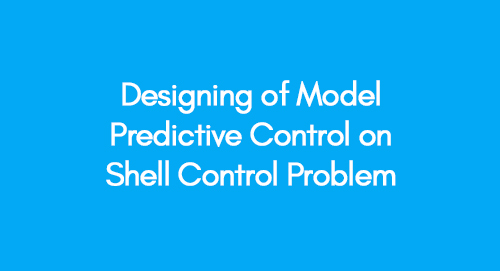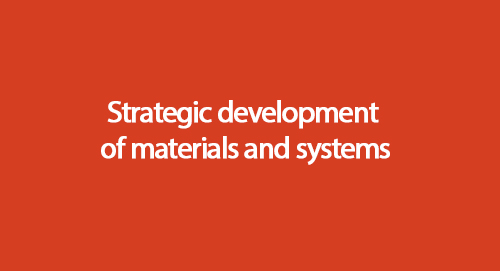
Is free trade the best economic policy that countries can adopt or is protectionism ever justified?
February 26, 2021
Consideration of Driver Behavior in Traffic Simulation
February 26, 2021Introduction
Strategic development of materials and systems with respect to civil engineering is critically important as this can enhance the durability and as well as cost-effectiveness of various construction materials. Much research has been conducted in recent decades with a focus on establishing solutions for the deterioration of civil infrastructure. Further research on smart materials development is essential is considered to be essential for the economic growth of any region/country.
The influential smart material development through the use of state-of-the-art technology has already revolutionized the 21st century. Engineers and scientists around the globe have devised methods to analyze, synthesize, produce and generate new engineered materials. The new generation of synthesized materials includes ceramics, composites and plastics, which has caused a considerable impact on the industry of civil engineering. The following figure presents the diversity of these materials
|
Material Types/Classes |
Production Examples |
Characteristics of finished goods |
Utilization |
|
Metals and/or Alloys |
Pure metals such as copper, Steels ( e.g mild steel), Non-ferrous and Super Alloys |
Toughness, Flexibility and Strength can be controlled/adjusted depending upon requirements |
Frames, Pipes, Bolts, Bars, Joints/supports, Automobiles, Vessels etc |
|
Polymerized Plastics |
PVC, UPVC, Rubbers |
Corrosion resistant. Toughness, Flexibility, Strength and Density can be controlled/adjusted depending upon requirements |
Pipes (including underground), Panels for buildings, gypsum boards/sheets/panels and processing plants |
|
Materials for Construction |
Cement, Building Stone, Sand and Clay etc |
Economical, Durable and high production/supply. Can be manufactured from various material types including fire resistant |
Building construction, Road Construction and maintenance, Bridges construction |
|
Ceramics |
Carbides of metals, Alumina, nitrides of silicone |
High Strength/hardness and high resistance for temperature and corrosion. |
Refectories for furnaces, Floor tiles, cutting-tools, quality finishing toilet items |
|
Composites |
Reinforced fibre plastics/ceramics / metals |
Low weight with higher strength and toughness instruction construction |
Construction and transport |
Due to extensive research in the field of ‘material sciences’, various high-quality and economically viable materials have been developed that are now been utilized in the construction industry. Hodgson and Brown 2000 presented Nickel/Titanium as smart materials and since then, such materials have been applied in many engineering applications including mechanical, aerospace and bio-medical.
Material can be described as smart if it can exhibit multiple characteristics when exposed to varying conditions. These can exist in 2 distinct phases at 2 distinct temperatures; for example, Austenite exists at higher temperatures whereas Mar tensile exists at lower temperatures. As soon as the external conditions i.e. temperature and/or stress is varied, one phase will be transformed into another phase. It is important to note that the smart materials present special and varied characteristics under each phase, for example, the super-elasticity and memory shape effect can be controlled and adjusted due to changes in their properties.
The need and use for smart materials are rising due to their unique characteristics and properties due to the improved technological advancements and innovations in engineered equipment, actuators and sensors. The smart materials can be designed/manufactures as self-adaptable, self-sensing and with various other functionalities including memory. Therefore smart materials and structures have been applied in many industries and fields. Self-adaptability of the smart material takes advantage of the built-in adaptation characteristic, which is used for shaping alloys. Another application of smart materials is their ability to self-repair. This is achieved by varying the properties of the smart materials so that it diagnoses the cracks and faults. The smart material, which is embedded in the host material, is activated to adjust the faults and any cracks.
The Shape Memory Alloys, alas so knowns as SMA, is another smart material that processes adaptive properties which enable it to transform thermal energy input to mechanical energy/work. Alloys of various metals such as Nickel, Titanium, Aluminum and Zinc can undergo considerable strains. This strain is caused by the response to recover the initial configuration after the alloys are subjected to deformation and/or heating process. Upon precise mixing and composition of the process, various alloys show such effects through the repetition of energy/heat inputs. This property has been the driving factor in the development of various commercial products, of which the most popular has been Shape Memory Alloy.
Shape Memory Alloy
The state of stress is another important parameter along with the composition of material for the temperatures of phase transformation, as the change in stress, can lead to a change of temperature required for deformation. Therefore, the phase transformation can be activated and controlled through the precise application of stress on the host material. This characteristic is utilized in various applications and is known as self-repair.
The application of this smart property is observed and applied in modern concrete structures. When the structures of concrete get cracked, the Shape Memory Alloy activates the transformation of phase due to the increase of stress, which consequently enables the compressive stress in its reactions which assures that the structure’s cracking is limited and controlled. Furthermore, Shape memory alloys shrink as the temperature increases because of phase transformation. This neutralizes the effectual thermal expansion of the concrete structure, which is another Smart material properly considered to be very useful in civil engineering.
Applications
The properties of Shape Memory Alloys which enable their use in application-related civil engineering are;
-Absorption of high usable strain range and avoiding permanent deformation.
- High fatigue resistance
- High durability, viability and reliability
Therefore this adaptive behaviour has been used for structural control which can be subjected to natural disasters such as earthquakes and other environmental loads. The smart bridge system is one of its successful applications. This technology is also utilized for pass control of structures for energy dissipation devices. Other applications include;
- Smart material tag for the composite structures, which allows monitoring of the material’s internal condition including moisture, cracks and stress measurement/identification
- Retrofitting through the use of self-stressing (s) fibres, which offers more viable solution beams confinement
- Self-healing to recover cracks and closing the cracks to avoid further damage. This is due to the smart material’s self-healing behaviour at micro-level
- Self Stressing and Health Monitoring of structures
Densified Re-enforced Concrete (DRC)
The reinforced concrete fibre has evolved as another important smart material for structures. Due to its ability to conduct current and change the conduction properly, the reinforced carbon fibre concrete is considered to be the next generation smart material. This product is produced with high-density alloys under extensive pressure. According to DRC technology, The Re-enforced concrete fibre can be designed to have higher strength and durability as compared to other metal alloys and plastics

References
Hodgson, D.E., and Brown, J.W. (2000). “Using Nitinol Alloys,” Report of Shape Memory, Applications Inc.
Maji, A.K., and Negret, I., (1998). “Smart Prestressing with Shape-memory Alloy.” Journal of Engineering Mechanics, Vol.124, No.10.
Cai,C.S., Wu, W., Chen, S. and Voyiadjis,G., (2003). Applications of Smart Materials in Structural Engineering. LTRC Project No. 02-4TIRE, State Project No. 736-99-1055.
Brei, D., (1998). “Smart Structures: Sensing Technologies for Structural Health Monitoring”, SAE Technical Paper Series, 981508.
Giurgiutiu, V., Lyons, J., Petrou, M., Dutta, S., and Rogers, C. A., (1998). “Strength, Durability, and Health Monitoring of Composite Overlays on Civil Engineering Structures”, Proceeding of the International Composites Expo ICE-98
Dufault, F. and Akhras, G., (2000). “Applications of Smart Materials and Structures in Bridge Construction”, Proceedings, 3rd Can Smart Workshop on Smart Materials and Structures.
Lagoudas, D., Rediniotis, O.K., and Khan, M.M., (1999).“Applications of Shape Memory Alloys to Bioengineering and Biomedical Technology.” Proceeding of 4th International Workshop on Mathematical Methods in Scattering Theory and Biomedical Application, Perdika, Greece.
Lagoudas, D.C., (2002). “Introduction to Shape Memory Alloys,” Smart Lab at TAMU. Available online at :http://martensite.tamu.edu/overview/overview.html [Retrieved November 01, 2013]
- Krstulovic-Opara, N., and Naaman, A.E., (2000). ACI Structural Journal.
Dunna, K.A., Louthana, M.R., Lyera, C., Giurgiutiub, V., Petrouc, M.,and Laub, D., (2004). Application of Smart Materials/Technology at the Savannah River Site. Available online at: http://sti.srs.gov/fulltext/ms9800722/ms9800722.pdf [Retrieved November 02, 2013]
Get 3+ Free Dissertation Topics within 24 hours?



























